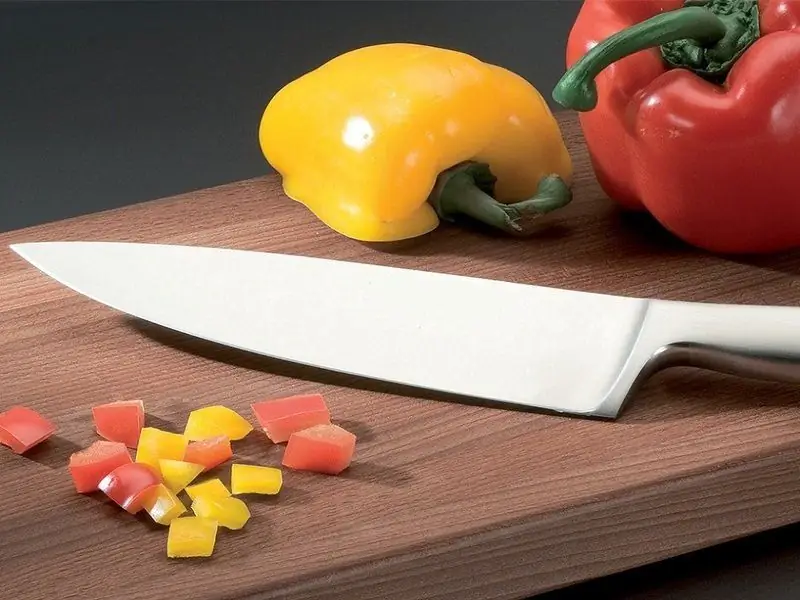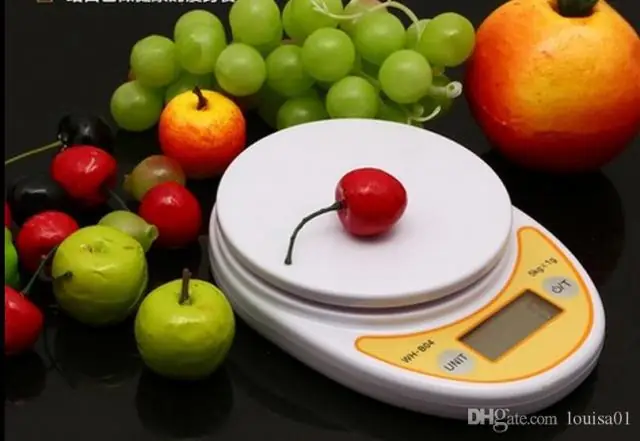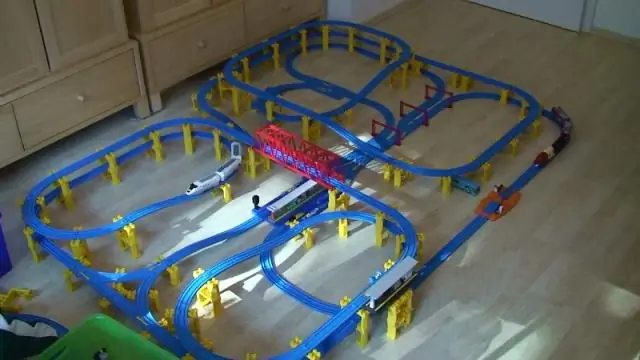
Table of contents:
- Author Bailey Albertson [email protected].
- Public 2024-01-17 22:26.
- Last modified 2025-06-01 07:32.
How to choose quality kitchen knives

If you love to cook, then the knife is one of your main assistants in the kitchen. And even if you have an ultra-modern food processor, you still can't do with one knife - there should be several of them. Modern manufacturers offer many different models; just the number of brands and their products diverge. How to choose the right knives for your kitchen, without being mistaken in the price and purpose - we will talk about this today.
Content
-
1 What knives to choose and how many you need
1.1 Gallery of knife types
-
2 Metal or ceramic?
- 2.1 Knives made of metal
- 2.2 Ceramics
-
3 Selection criteria
- 3.1 Blade
- 3.2 Efficiency of the cutting edge, or sharpening
- 3.3 Handle
- 3.4 Ease of use
- 4 Popular manufacturers
- 5 Rules of storage and use
- 6 Video: how to choose knives for the kitchen
Which knives to choose and how many do you need
On a camping trip, you can probably get by with one knife - a penknife. But in the kitchen, each type of food may need its own, separate knife. So, let's divide the standard set according to the purpose of each element.
- Knife for cutting bread, loaves, pastries. It has a long serrated or wavy blade, its width is equal along its entire length. Equipped with a large handle.
- Three long knives (25-45 cm) with a wide blade, a sharp tip and a rounded cutting surface. These knives are designed for cutting tough, hard food.
- Fruit and vegetable peeler (vegetable peeler). It is of two types. The first has a sharp tip, a shortened blade, a flat cutting surface, and is equipped with a comfortable large handle. The second has a blade fixed between two holders and a hole in the "body", which is very convenient for cleaning vegetables - potatoes, carrots, beets and others.
- A knife for trimming meat from a bone is of medium length, narrow, its blade is widened at the base, and bent towards the tip. The cutting surface of such a knife is smooth and not chipped.
- A knife for slicing cheese and sausages. The cutting surface has no bends, the blade is long and wide enough.
- Serrated fish knife with flexible blade of equal width in all areas.
- Butter and pâté cutter with a wide, medium-length blade and a rounded tip.
- Shortened mushroom knife. Made of plastic, the handle has a hard brush for cleaning the caps.
-
Hatchet knife, or kitchen cleaver. Designed for cutting meat and chopping bones. Equipped with a wide, sharp blade and a powerful handle.
Gallery of types of knives
-

Shortened mushroom knife - Shortened mushroom knife
-

Butter and Paste Knife - Butter and Paste Knife
-

Fish knife - Fish knife
-

Hatchet knife - Hatchet knife
-

Vegetable cutter - Vegetable cutter
-

Hot butter knife -
Hot butter knife
-

Bread knife - Bread knife
In addition, you can choose a few more knives designed only for a certain type of food. For example, a salmon knife, or a fillet knife. With it, you can easily cut large fish into thin slices. The grooves on either side of the blade make it easier to cut oily fish.

Salmon, or fillet knife
A special cheese slicer will help you cut the cheese head into thin slices, usually these knives are Teflon coated to prevent the soft cheese from sticking.

Cheese slicer
The serrated knife is equipped with a narrow serrated blade. It is easy for them to chop tomatoes, kiwi and citrus fruits, which have a delicate flesh under the dense skin. It is not recommended to cut the sausage because the edges will be uneven.

Narrow blade serrated knife
Metal or ceramic?
Metal and ceramic knives are not interchangeable; although they have a common purpose, the difference between materials can be significant. Let's take a closer look at the pros and cons of both types of knives.
Metal knives
First of all, pay attention to the location of the steel and how strong it is. The area of the knife handle is the weakest point, often products bend and break exactly in this place. The best knives are made from a single piece of metal by hand forging. But such a product is very expensive.

Metal knives are the most common and traditional in our kitchens
- Good knives are often made from carbon steel. It quickly gives a sharp angle when sharpening, but care must be taken that such a knife does not rust. A steel knife can be sharpened without any problems on your own, but it is important not to corrode it.
- Manufacturers of inexpensive knives often use stainless steel in their production. Such products are prone to quick dulling, and you will need time to re-sharpen. If you decide to buy stainless steel knives, opt for a high-carbon material: such a blade will not rust, although it will require sharpening. The lower carbon content gives the product hardness and keeps the sharpness longer, but does not save it from corrosion.
- Forging provides the metal with additional strength, so forged knives are of better quality than stamped ones.
Ceramics

Ceramic knives
- Zirconia is used to make ceramic blades, which is a very hard material. For comparison: a metal knife after sharpening remains sharp for a month, and a ceramic knife will last at least ten. And with proper operation, sharpening may not be necessary at all.
- Ceramics have no pores, which means that after cutting the products, the taste of one will not be transferred to the other. That is, after chopping onion, garlic or hot peppers, you can simply rinse the knife and continue working.
- Since the structure of the ceramic blade is dense and non-porous, the device is hygienic and easy to maintain.
- A ceramic knife is lighter than a metal one. This reduces the stress on the arm and shoulder when working.
But even this material has significant drawbacks:
- The ceramic blade is very fragile. This knife is not intended for chopping bones or slicing frozen meat. If you drop it on the floor, it may break; the metal knife will only bend.
- A ceramic knife is not universal, it is only suitable for certain types of work with food.
- The price of ceramic knives, in comparison with metal products, is quite high.
- Self-sharpening of ceramic knives is not recommended.
Criterias of choice
First of all, the knife should be convenient for you personally. But you need to pay attention to a few more points that determine the quality of products.
Blade
High quality chef knives are made of stainless steel, which is chrome-added for strength. Chromium is often alloyed with molybdenum and vanadium, which significantly reduces the brittleness of the steel. Durability of the product is provided by forging.
The surface of the blade should be free of scratches, roughness, streaks and notches. The material should be homogeneous in composition
It is very important that the blade is properly secured: along the entire length of the handle, not two-thirds or half. The polished rivets holding the blade and handle firmly adhere to the base and never stick out of the grooves. Molded plastic handles without rivets on the surface are not the best idea for your kitchen.

Pay special attention to the quality of the blade
The sharpness of the blade is an important criterion when choosing a knife. Do not believe the sellers who claim that you can easily sharpen this wonderful knife model yourself at home. You're just throwing your money away. The cutting properties of the product directly depend on the sharpening angle. Brand knives of high quality are processed only on professional equipment.
Cutting edge efficiency, or sharpening
Look at the knife from the side. If the cutting surface looks like waves and expands slightly towards the point, you should not spend money on such a product (this does not apply to bread knives). There should be no chips or dents on the cutting surface of the knife. Ideally, it is a continuous shiny line from pen to tip.
Be sure to pay attention to the blade sharpening method. Laser sharpening is considered optimal. Its distinctive feature is matte notches in the form of scratches. This option is more expensive, but it is durable and does not require sharpening. Such knives are made of two layers of metal: hardened on top of the usual. When a layer of hardened metal is grinded off, the normal metal is exposed and self-sharpening occurs.
Lever
It can be made in wood, plastic or metal.
- The wooden handle is comfortable for the hand, heat-resistant, lightweight. But it has its downsides. Over time, the tree loses its appearance: it is worn out, covered with cracks that absorb fat. If you often leave such a knife in water, the handle will suffer even more.
- The plastic handle is strong and durable, it is not afraid of prolonged contact with water and grease. But it is impossible to determine from it how long the steel sheet is hidden in it. And it should reach the tip of the handle, otherwise it will simply loosen and fall off over time.
- The metal handle is considered ideal. It is durable, does not crack over time. Does not loose or break. Of the minuses - a certain weight of the product, which may not be very convenient for work.
Ease of use
You can always easily take out a good, high-quality knife from the package, “try on” it to your hand, evaluate it by touch. Do not buy a knife in a package that cannot be opened, you must evaluate it before you buy it.

Knives should be easy to use and easy to store
Check how easy and comfortable the product is in the hand, in particular, if the handle is too thick for the palm. The handle must not outweigh the blade.
And don't forget that a quality knife cannot be cheap. The product will not serve you faithfully for a long time if you bought it for the price of a kilogram of potatoes.
Popular manufacturers
If you want a really high quality product, then you should pay attention to reputable manufacturers. No one doubts the fact that, for example, "Solingen" is much better than a knife from a dubious company, purchased on the stock or spontaneous market. We bring you a list of manufacturers representing the best knives according to experts.
-
Wusthof Dreizack, Solingen, Germany. The knives are made of the highest quality hardened carbon steel, resistant to corrosion. The lower edge is hand sharpened.

Knives from Wusthof Dreizack Knives from Wusthof Dreizack
-
Zwilling JAHenckels, Solingen, Germany. High strength blade made from a single piece of steel, extremely corrosion resistant. Manual sharpening.

Zwilling JAHenckels knives Zwilling JAHenckels knives
- Dick, Deizisau, Germany. High quality stainless steel knives.
-
Sabatier, Thiers, France. High quality steel, thin handle, round base.

Sabatier knife Sabatier knife
- Evercut, France. High quality, style, exquisite design, strength and durability.
- Victorinox, Schwyz, Switzerland. The steel contains carbon, silicon, chromium, manganese and molybdenum. Not susceptible to rust, hardness RC 56.
- GLOBAL, Japan. Knives are made of molybdenum-vanadium CROMOVA steel by cold hardening. They are resistant to corrosion and have a long service life.
- Arcos, Spain. In addition to the spectacular look, they are distinguished by high quality, long service life.
-
Del Ben, Italy. High quality stainless steel is used in the manufacture. At the "finish" is manual processing. Handles are made of fine wood, original design.

Del Ben Knife Set Del Ben Knife Set
Storage and use rules
It is not enough to purchase quality knives from a reputable manufacturer. It is very important to operate these products so that they last as long as possible. Remember the basic rules for storing and using knives:
- special stands or magnetic holders should be provided for storing knives;
- make sure that the blades do not rub or hit against each other and other metal objects;
- the best cutting boards are wood and plastic, forget about glass or stone;
- ceramic knives should be stored in paper cases and hidden from the sun;
- wipe the knives dry immediately after washing, do not leave them in water, especially if you used them to cut onions and lemon;
- professional knives should be washed by hand - they quickly dull in the dishwasher;
- if your knives are carbon steel, do not wash them in hot water;
- use knives only for their intended purpose and do not heat them.
Perhaps the main advice when choosing knives is not to save. Indeed, a really good, high-quality knife will greatly facilitate and speed up the work in the kitchen, and also make it enjoyable
Video: how to choose knives for the kitchen
Take a close look at which knives are important in your kitchen. Perhaps it is high time to replace them, because the devices are aging, and the technologies do not stand still. If so, then surely our tips will help you make the right choice. Let us know in the comments your ideas for choosing and caring for knives. Good luck and comfort to your home!
Recommended:
How To Choose A Kitchen Electronic Scale, Which Is Better: With Or Without A Bowl + Reviews

Electronic kitchen scales are often an indispensable item in everyday life. How to choose a convenient appliance for your kitchen?
Choosing A Boiler: Which Company Is A Storage Water Heater Better, Including An Electric One, How To Choose, Characteristics And Other Aspects

Types of water heaters. Features of the device and technical characteristics of boilers. How to choose a boiler for heating water
Women's Trimmer For The Bikini Area: Which Is Better To Choose And How To Use, Comparison With An Epilator + Reviews And Videos

How to choose a women's bikini trimmer. What is the difference from other depilation tools, what to look for when buying
How To Choose A Hand Blender For Home And Which Manufacturers Are Better + Video And Reviews

Advantages of hand blenders. How to choose a quality and functional blender. What models do buyers choose. Rating. Reviews. Video
How To Choose A Good Electric Toothbrush For An Adult And A Child And Which Manufacturers Are Better + Videos And Reviews

How to choose an electric toothbrush? Rating of brushes from different manufacturers for adults and children, expert advice and customer reviews
